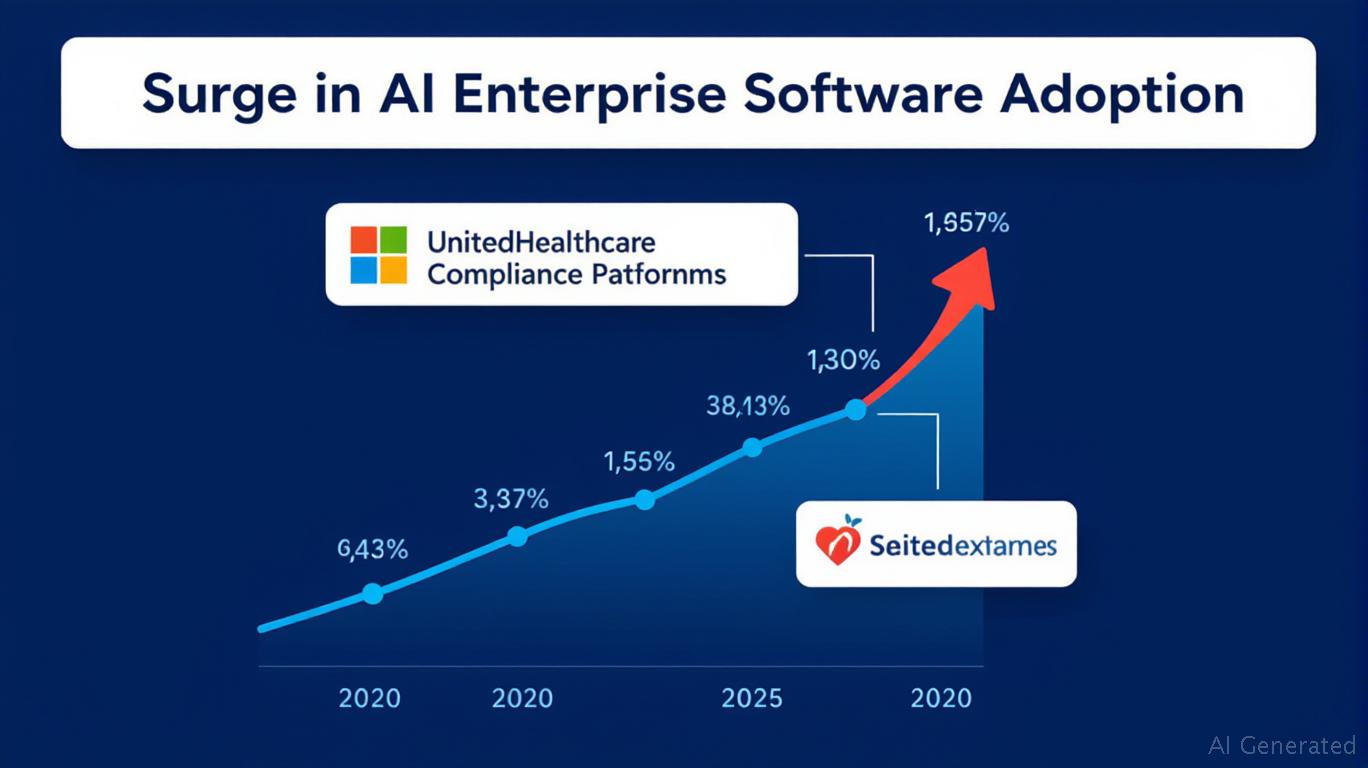AInvest Newsletter
Daily stocks & crypto headlines, free to your inbox
The rise of AI in workforce productivity monitoring is reshaping how enterprises optimize labor, yet it is also sparking fierce debates over ethics, privacy, and compliance. Companies like
and UnitedHealthcare are at the forefront of integrating real-time tracking tools, but their innovations face growing scrutiny. For investors, this duality presents both risks and opportunities in a sector poised for transformation.
AI-driven tools like Microsoft Viva exemplify the promise of real-time workforce analytics. By integrating employee sentiment data from Viva Glint with work-pattern insights from Viva Insights, Microsoft enables companies to predict burnout risks and align workflows with engagement drivers. For instance, a pre-built report might reveal that teams with fewer than three hours of meetings daily report 20% higher satisfaction—a metric that can guide organizational restructuring.
Similarly, UnitedHealthcare's focus on telehealth integration and prescription drug data transparency underscores how AI can streamline healthcare costs and compliance. By automating ACA reporting (e.g., 1095-B/C forms) and HIPAA-compliant data handling, these tools reduce administrative burdens while mitigating regulatory penalties.
Microsoft's 30% stock appreciation since 2023 reflects investor confidence in its enterprise AI stack. Yet, the real value lies in its ability to address both productivity and compliance—a dual mandate critical for enterprise software buyers.
Despite the benefits, AI-driven monitoring faces significant hurdles. The European Union's AI Act, set to finalize in 2026, could classify real-time employee surveillance as “high-risk,” mandating strict transparency and consent requirements. In the U.S., HIPAA amendments (effective 2024) now bar the use of reproductive health data for legal investigations—a precedent that could expand to broader workforce data.
Employee resistance is another barrier. A 2024 survey by
found that 62% of workers distrust employers using AI to track keystrokes or screen time, citing fears of micromanagement and job insecurity. This sentiment could hamper adoption unless companies pair monitoring with employee-centric transparency, such as real-time access to their own data.The winners in this space will be firms that mitigate risks while delivering value. Consider three avenues for investors:
Privacy-First Solutions:
Startups like Imprivata and Privitar are developing AI tools that anonymize workforce data or enforce GDPR-compliant access controls. For example, Privitar's “data masking” technology could allow companies to analyze productivity trends without exposing individual employee data—a critical feature in post-GDPR markets.
Alternative Productivity Metrics:
Firms like Monday.com and Asana are shifting focus from time spent to output-based KPIs (e.g., project completion rates, customer satisfaction). This aligns with a growing trend toward “wellness-driven productivity,” where tools prioritize mental health alongside efficiency.
Healthcare Compliance Platforms:
UnitedHealthcare's RxDC reporting tools and HIPAA attestation services (e.g., Submission ID 66375) highlight a $5B+ market for compliance automation. Investors might look to niche players like ComplySci or Workday, which specialize in regulatory reporting for employee benefits and healthcare data.
The AI productivity market will reward companies that embed compliance and privacy into their core products. Microsoft's integration of DG expansion for DLP policy tips in Viva Learning—a feature that flags privacy risks in training data—shows how leading firms are adapting. Meanwhile, UnitedHealthcare's emphasis on employee benefit transparency (e.g., zero-cost telehealth programs) underscores the value of pairing monitoring with tangible employee benefits.
For investors, the path forward is clear: prioritize firms that solve compliance challenges while redefining productivity beyond surveillance. Those that do may not only avoid regulatory pitfalls but also capture a slice of a market projected to hit $30B by 2027. The era of “AI for productivity” is here—but its longevity hinges on whether companies can prove they're working with employees, not just on them.
The numbers are compelling—but so are the stakes.
Delivering real-time insights and analysis on emerging financial trends and market movements.

Dec.15 2025

Dec.15 2025

Dec.15 2025

Dec.15 2025

Dec.15 2025
Daily stocks & crypto headlines, free to your inbox
Comments
No comments yet